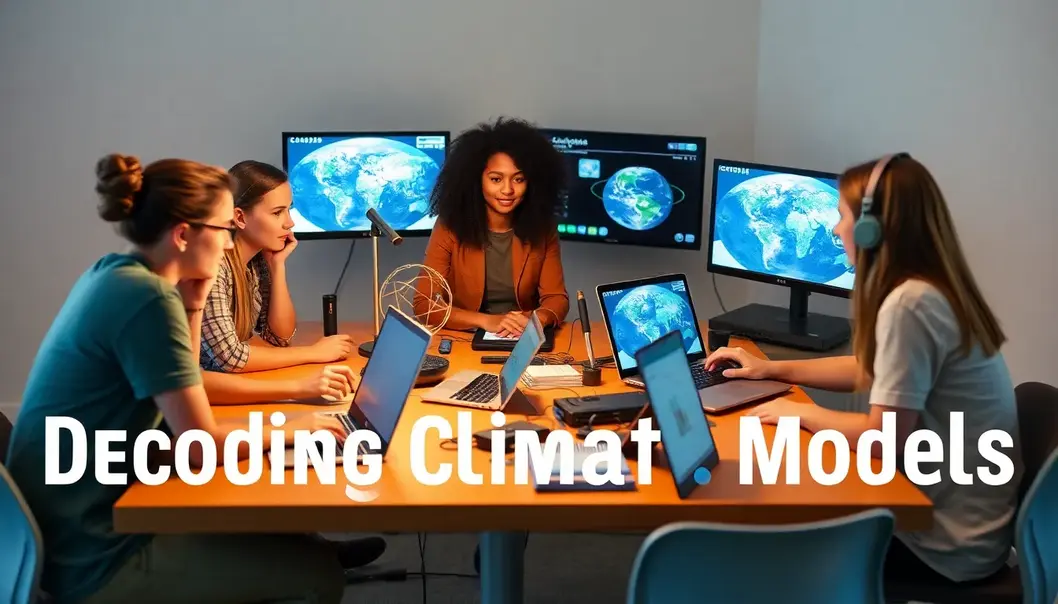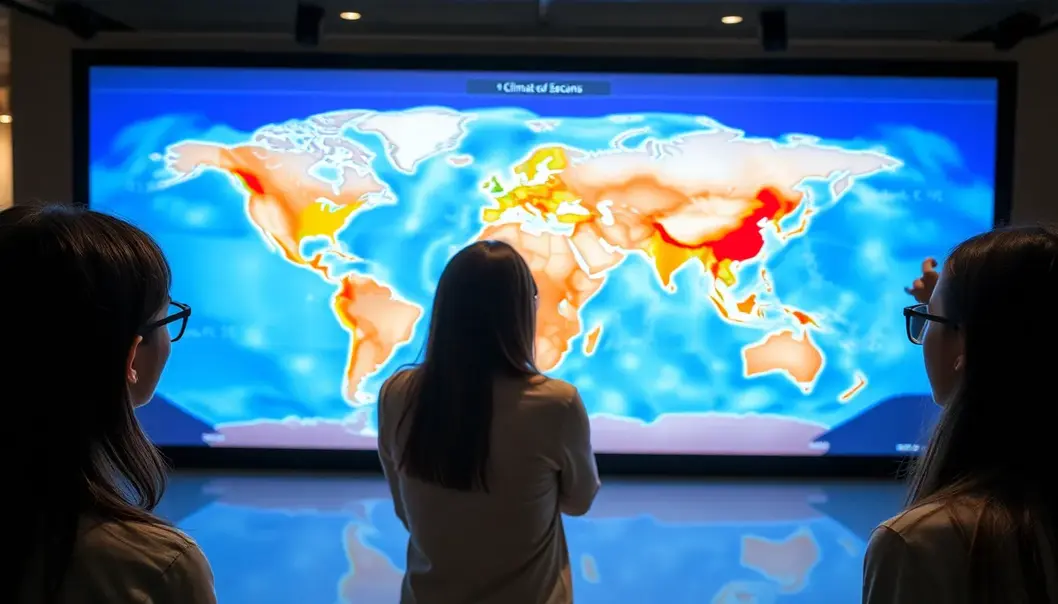Climate models are like crystal balls for scientists, helping them predict the future of our planet. Understanding these models can offer young adults an insight into global warming, shifting weather patterns, and how they might shape our world. These complex systems use data from the past and present to simulate the Earth’s behavior in response to various factors. Imagine stepping into a video game where you can tweak the environment and witness the outcomes – that’s pretty much how scientists use climate models. We’ll explore how these models work and why they’re crucial for making decisions about everything from governmental policies to your weekend hiking plans.
What Are Climate Models and How Do They Work?

Imagine having a crystal ball that could show you the future of Earth’s climate. While we haven’t mastered magic, we have developed something that seems almost as extraordinary: climate models. These models are sophisticated tools that scientists use to understand and predict climatic changes by digitally simulating Earth’s complex systems. Through a blend of vast data points and intricate algorithms, climate models offer a glimpse into what our planet might face regarding weather patterns, ocean behavior, ice sheet dynamics, and human-environment interactions.
At the core of climate models are mathematical representations of the Earth’s systems. They intricately weave together variables such as temperature, carbon dioxide levels, and ocean currents to create a coherent representation of our global climate system. To grasp their significance, think of climate models as immense jigsaw puzzles; each piece represents a different environmental variable, and when combined, they illustrate the tapestry of Earth’s climate.
These models are not one-size-fits-all. On one end of the spectrum, we have global climate models (GCMs). These are expansive, covering the entirety of the Earth, and offer a macroscopic view of climate interactions over time scales stretching from decades to centuries. GCMs are central to understanding large-scale trends such as global warming and guide international climate policies.
For more localized insights, regional climate models (RCMs) come into play. These models delve into details that GCMs might miss by focusing on specific areas and shorter time frames. RCMs enable scientists to predict the impacts of climate change on a regional scale, such as shifts in local weather patterns that could influence agriculture.
Both types of models rely on powerful computational resources to perform extensive simulations, requiring a deep well of data from various sources. These include observational data, satellite information, and past climate records. By assimilating such data, scientists calibrate and validate the models to ensure their predictions are plausible and reliable.
Climate models might sound like a marvel of modern technology—and they are. Yet, they are grounded in solid science and meticulous research. These simulations continue to evolve, guided by increasing computational capabilities and enriched datasets. Thus, they continually enhance our understanding of the intricate dance of factors shaping our planet’s climate, helping humanity prepare for the future.
The Impact and Importance of Climate Models

Climate models are invaluable tools in understanding and responding to the future challenges our planet faces. These models are not merely confined to academic research; they play a pivotal role in shaping real-world policies and actions by predicting extreme weather events and assessing the implications of rising sea levels.
Consider a region bracing for hurricane season. Climate models, by predicting the intensity and frequency of these storms, allow authorities to plan and implement evacuation strategies effectively, minimizing risk to human life. For instance, accurate predictions of rainfall patterns help farmers make informed decisions about crop planting and irrigation, potentially averting food shortages.
Climate models also offer insights into the long-term impacts of sea-level rise. As ice caps melt and temperatures increase, models simulate how coastal regions might be affected. This knowledge is crucial for urban planners and government officials in developing strategies to protect low-lying areas from flooding and erosion. These practical applications help adapt and mitigate the effects of climate change at both local and global levels.
Moreover, climate models are instrumental in guiding policy makers on emission reduction strategies. By simulating various scenarios based on different levels of carbon emissions, models illuminate the potential trajectories our climate could take. Imagine the power of crafting policies with a clear understanding of which measures are most likely to reduce the carbon footprint and slow down climate change effectively.
One remarkable aspect of these models is their ability to offer hope and solutions rather than mere predictions of disaster. By identifying areas vulnerable to climate impacts, models highlight where interventions could be most beneficial. International efforts, such as climate agreements, rely heavily on the data and projections provided by climate models to set achievable goals for emissions reductions and sustainability.
A notable example where climate models influenced action was in the formulation of the Paris Agreement. The commitments made by various countries were based on model projections indicating how their intended contributions could influence global temperature trajectories. This collaborative approach underscores the importance of these models in orchestrating global climate strategies and encouraging international cooperation.
While the breadth of impact climate models have on policy and planning is vast, they also extend their reach to community and individual levels, prompting citizens to adopt sustainable practices. The ability to foresee the effects of these practices empowers communities worldwide to engage proactively in combating climate change.
In summary, climate models are indispensable not only in projecting potential outcomes but also in crafting informed and effective responses to environmental challenges. They transform the abstract concept of climate change into actionable steps, offering humanity the tools necessary to navigate toward a more sustainable future.
Final words
Understanding climate models is like holding a cheat sheet to Earth’s future. They empower us to anticipate changes and adapt strategies for sustainability. Young adults, as future decision-makers, play a pivotal role in utilizing these insights to craft responsible policies and lifestyle choices. By embracing these models, we don’t just predict the future; we actively shape it for the better. Stay informed, stay engaged, and you’ll be ready to contribute to a healthier planet.
Ready to learn more about climate science and make a difference? Join us today!
Learn more: https://www.climatechangeinitiative.org/join
About us
Climate Change Initiative offers interactive workshops and accessible resources to empower young adults in understanding and acting on climate change. Led by experts, our programs are designed to inspire and educate, helping you become a proactive participant in building a sustainable future. Join our community to engage with like-minded peers and make a real impact on the world around you.

